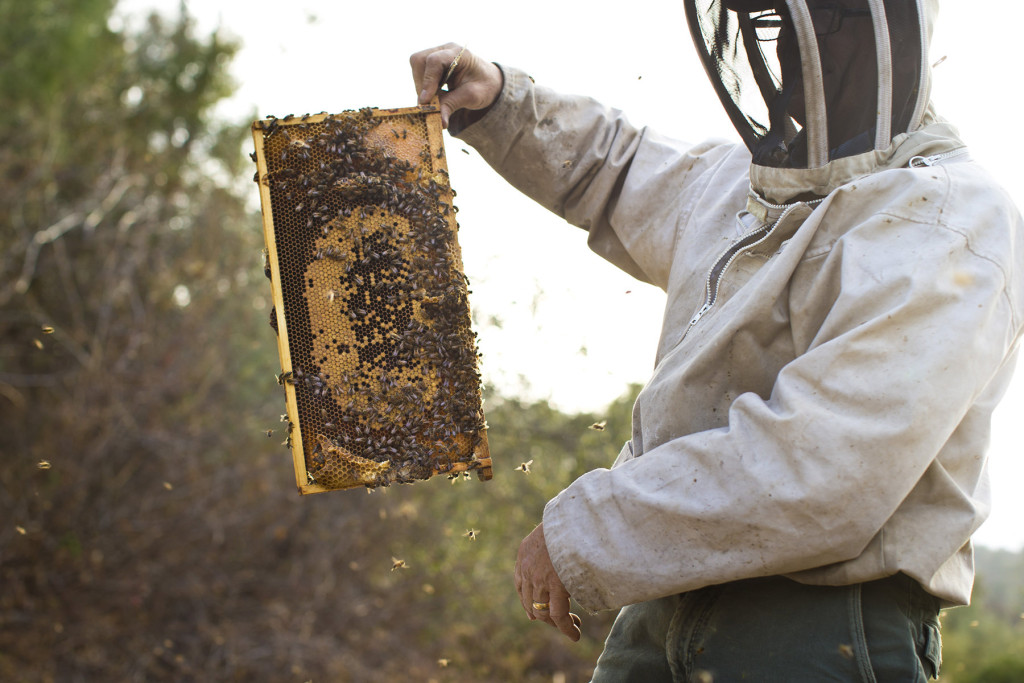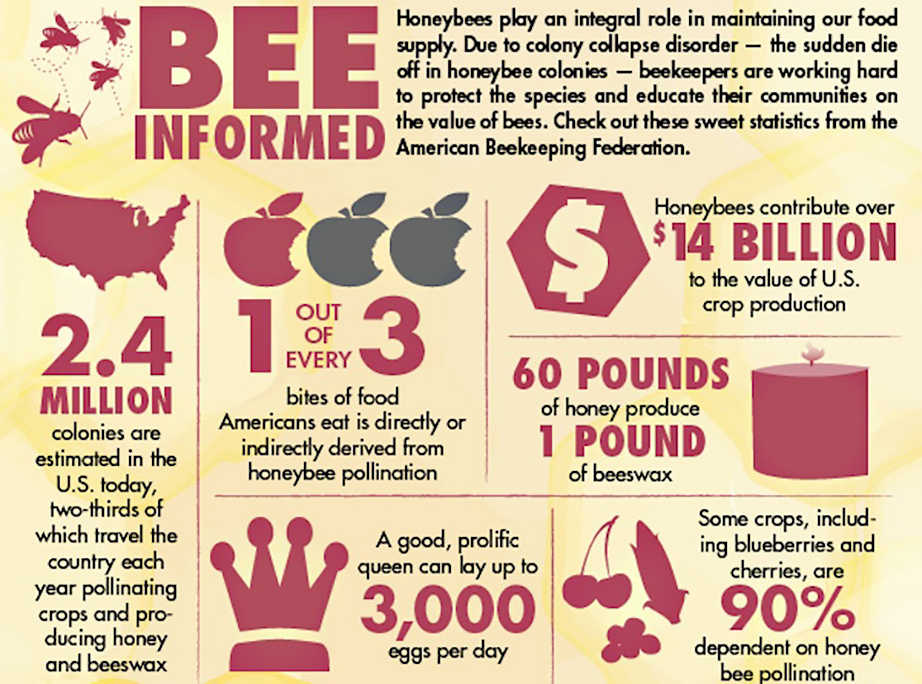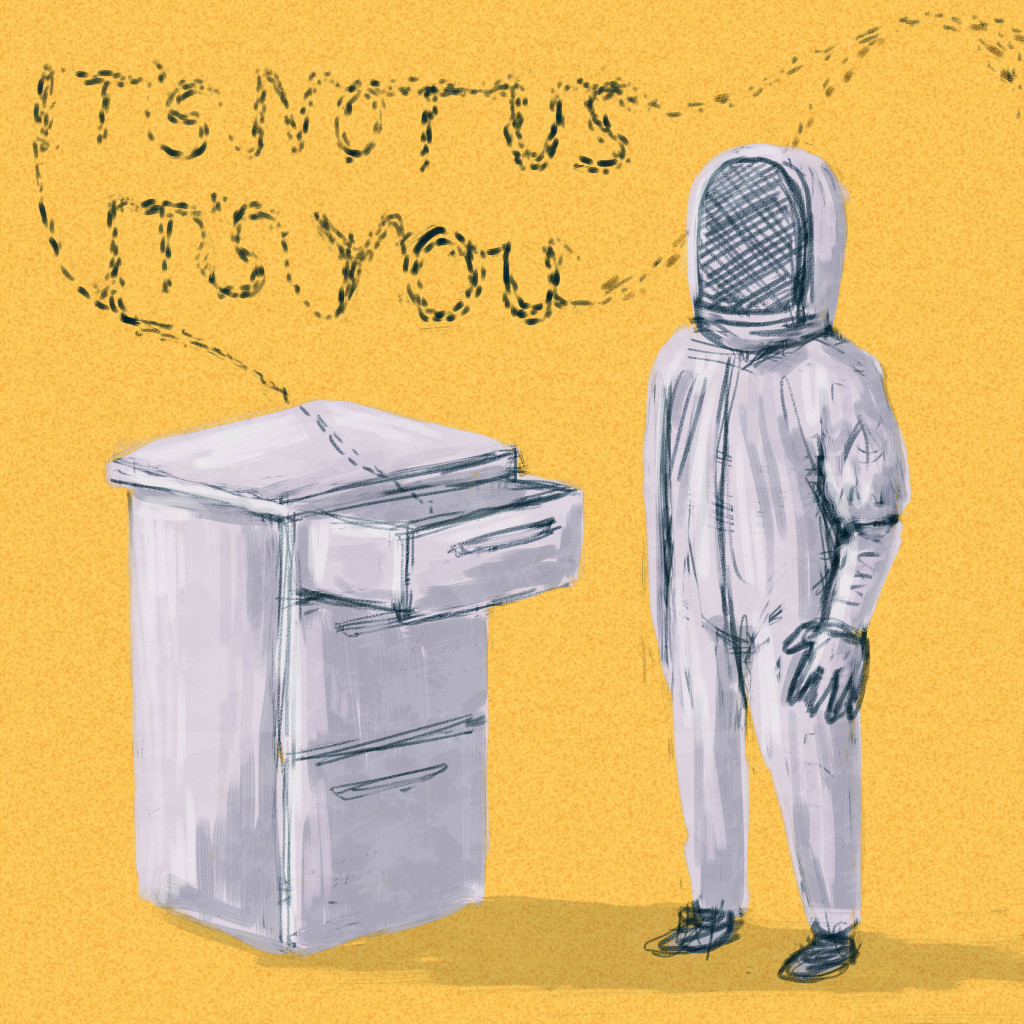An overview: Why are bees dropping like flies?
Every winter, American beekeepers lose, on average, about a fourth to a third of their hives. In Canada, the situation is a bit different–due to frosty weather, bee losses averaged between 15 to 29 percent from 2009/2010 to 2013/2014, as reported by Health Canada. As we lose the most common pollinators, we also lose about a third of our plates. While not every bee is a honeybee, all bees are pollinators, fertilizing plants so they can produce seeds, fruits and vegetables. These plants then serve as food for livestock, which in turn give humans dairy products and meat, making the drastic drop in bees bad news for just about everyone–human kind, animal kind and the economy.

The irony is that while the radical decline in honeybees is harmful to agriculture, it is also agriculture giving a hard time to the bees. The most cited reason, especially in Canada and more specifically in the province of Ontario, is pesticides. Neonicotinoids–introduced in the early 1990s as an alternative to human-damaging pesticides–is most commonly blamed, affecting the bees’ nervous system, disorienting them and making it difficult to navigate back to their hives.
“They can’t remember who they are or where to go,” said Vera Krischik, professor at the University of Minnesota, in “Nature’s Dying Migrant Worker”. Krischik studies insecticides.
While not found to be dangerous to humans, neonicotinoids are chemically similar to nicotine. According to Health Canada, 70% of dead bees collected during the planting periods for soy and corn in 2012 and 2013 had residue of neonicotinoids. The lack of variety in agriculture–monoculture–also makes it harder for bees to find nectar, as there is a limited variety of plants and flowers. Researchers have also found neonicotinoids to undermine bees’ immune systems, making them more susceptible to diseases carried by parasitic mites.
“It’s like they have AIDS,” said beekeeper Steve Ellis.
Farmers use pesticides to cut costs, protect their yields and enhance productivity. As such, this situation can be difficult for farmers. The real problem is that pesticides are used to produce cheap food. Organic farming is a solution for improving the health of bees–-and humans-–but it’s a more expensive option. Some seed companies are pushing farmers to keep using coated seeds–that is, seeds covered in pesticides, commonly how neonics (another term used to describe them) are applied, and studies are being funded by seed companies to ‘‘prove’’ that neonicotinoids aren’t damaging.
But there are others reasons why bees have been disappearing in great numbers. Climate change, with longer and harsher winters, often results in bee colonies not making it through the winter, a phenomenon called overwintering. Bees are also dying from parasites and pests, such as wax moths, varroa mite, tracheal mites and American Foulbrood, with varroa mite as the most detrimental. And still–habitat and food supply loss, and queen bee quality. All of these factors can result in what is called Colony Collapse Disorder (CCD), when the majority of worker bees in a colony disappear and leave the queen bee behind. This phenomenon causes bees to die in bulk–leading to a dramatic reduction of honeybees.
In a phone interview last summer, Chris Hiemstra, beekeeper at Clovermead in Aylmer, Ont., said that banning neonicotinoids was going to be a long process. ‘‘[In] five years, it won’t be such an issue as it is today.”
He was right. In May, the agriculture and forestry committee brought the issue of neonicontinoids to the senate. Ontario became the first of all jurisdictions in North America to apply firm rules on neonicotinoids use. On July 1st, new regulations were implemented to reduce the number of acres treated with the pesticide by 80%. In 2013, the U.S. Department of Agriculture and EPA reported a combination of factors, and not neonicotinoids, responsible for the honeybee decline, including parasitic mites, viruses, bacteria, poor nutrition and pesticides. Currently, the EPA is reviewing neonicotinoids registrations, a report that will conclude in 2018. Until then, no new agricultural uses for neonicotinoids will be allowed. The Fish and Wildlife Service has already banned their use in wildlife refuges in the Pacific Region.
There are a plethora of issues plaguing the bee population, but thankfully there are people working on solutions–mainly through urban beekeeping. In my follow-up piece to this feature, I will focus on what is being done to help save the bees and keep our plates full.


